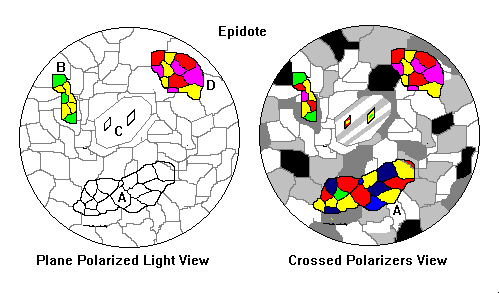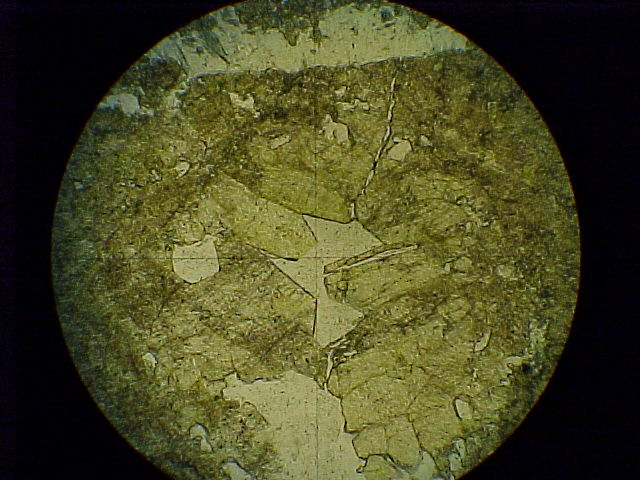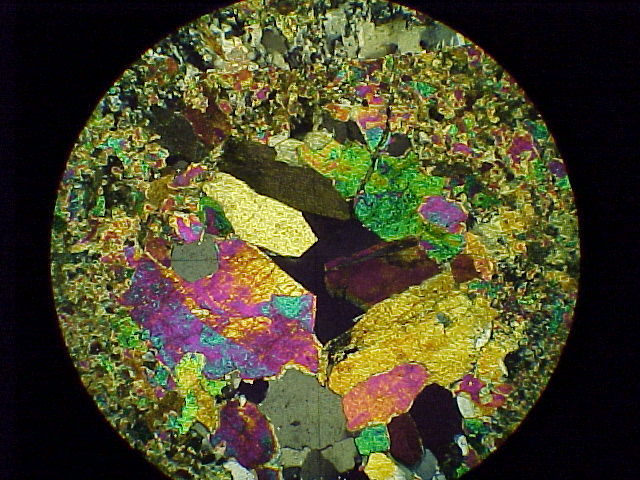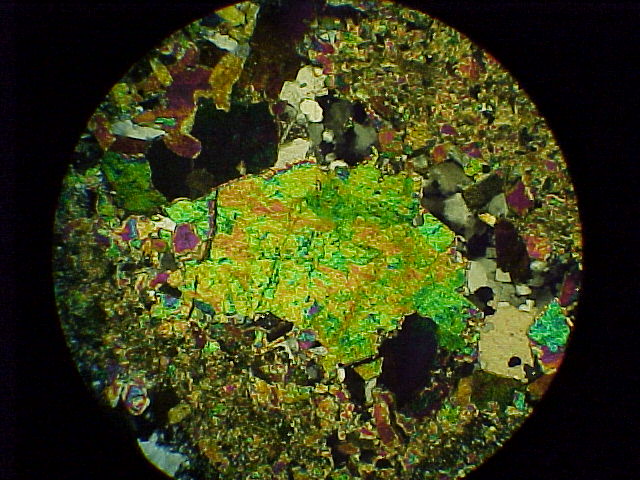Epidote
Steven Dutch, Professor Emeritus, Natural and Applied Sciences, Universityof Wisconsin - Green Bay

Plane-Polarized Light
High relief. Can occur as colorless irregular grains (A) or be tinted yellowish or greenish (B). Common alteration or metamorphic mineral derived from plagioclase, and small euhedral crystals in plagioclase are common (C).
Piemontite, an uncommon manganese-bearing epidote, is one of the showpieces of geology. It has a dazzling pleochroism in yellow, orange, red and magenta (D). It cannot be mistaken for anything else.
Crossed Polarizers
Moderately high birefringence resulting in vivid second- and third- order colors. Anomalous interference colors are common in the variety zoisite (A). Piemontite's bright colors totally dominate its interference colors.
The euhedral light-green crystals below, seen in plane-polarized light, are epidote.Note the rather high relief.

Same field in crossed polarizers. The bright interference colors are typical.

The brightly-colored mass in the center of this view in crossed polarizers is epidote. Variegated bright interference colors like these are typical of epidote.

Return to Mineralogy-Petrology Index
Return to Thin-Section Index
Return to Crystals and Light Index
Return to Crystal Structures Index
Return to Mineral Identification Tables
Return to Professor Dutch's Home Page
Created 10 Oct 1997, Last Update